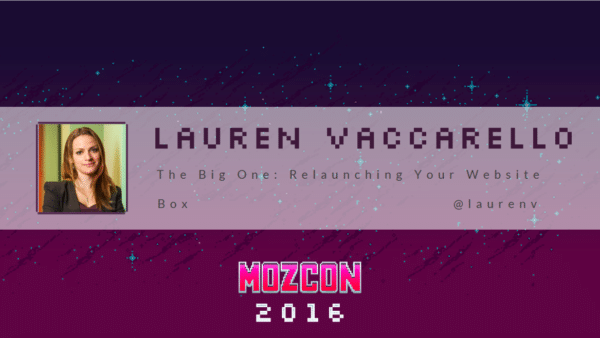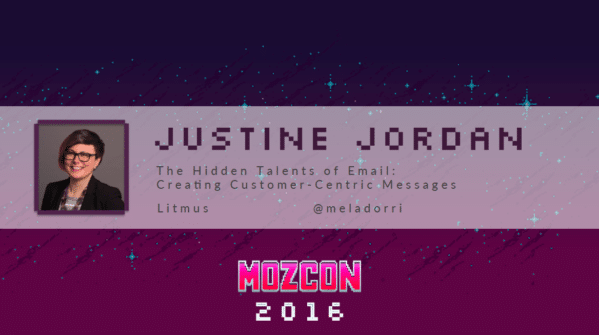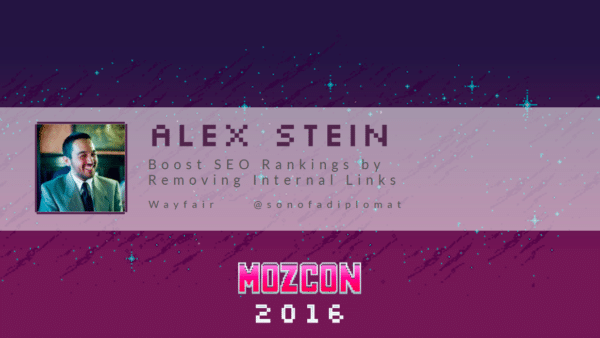This post originally appeared on the Mvestor Media blog.
Last week, I was fortunate enough to visit Seattle for MozCon 2016. This was my 5th MozCon, where my first was in 2011. I was looking for partners for our new Local SEO partner program. As usual, I met up with Brodie Tyler from ReviewJump where we had a great time meeting others in the industry. I wanted to create this MozCon 2016 review to show the main things that I learned and will apply to our web design campaigns.
FYI - I didn’t attend every session and speaker, only those that I was able to and felt were relevant to my industry and service offering.
MozCon 2016 Review and Takeaways

The Big One: Re-Launching Your Website with Lauren Vaccarello
Lauren gave me an entirely new outlook on re-launching a website. Although she works with larger brands and websites than we do, the principles she went over can still apply. There are a few main concepts I took away from her presentation.
Know Why You Are Re-Launching Your Site
Having a clear goal for re-launching a website is critical. Is it to lower bounce rate? Become more mobile friendly? Re-structure architecture? No matter the reason, the goal should be clearly defined.
Roll Out Changes in Stages
Many times, a site is launched without testing it with regular users first. Lauren gave us a great concept of launching the site in stages. Start with serving the new site with 1% of the user base, and gradually increase it to get good data to compare to your old site. This way, only a small set of users will experience issues and problems (if one exists), where they can be fixed prior to rolling the site out to 100% of visitors.
Launch Day is Day One
The project isn’t over after the site is the launched, it is just the beginning. Data should be collected to make sure that the new site was a success. This is also a good time to review the goal you set to make sure your purpose for relaunching was fulfilled.

The Hidden Talents of Email: Creating Customer-Centric Messages with Justine Jordan
I’ve seen Justine Jordan speak before at Artifcant in Providence in late 2014. She is always a top notch presenter. She spoke about email marketing best practices. Although we don’t provide email marketing as a service, we use it for lead generation and keeping our customers up-to-date. Here’s what I took away:
Spam is Defined by the User
There are many definitions of spam, but ultimately, the user decides what is spam and what is not. To be safe and have readers associate positive thoughts with your brand, always make sure you get permission from your users and customers before sending email to them.
Use replies@ email addresses
Many email use noreply@example.com to send out email. Change it to replies@ or something similar to encourage questions and support from your prospects of customers. You want to be open to hearing feedback from your user base.
Readability and Accessibility
Here are some notes I took down that speak for themselves:
- Don’t skip the plain text version of email - some modern devices rely on them, like Apple Watch
- Use retina images - save at 2X the resolution and scale down for crisp images on smartphones and retina devices
- Use alt text on images in case they don’t load, you can still communicate the message in them
- The majority of smartphone users can’t click. Don’t use “click here” but instead use “read more”.
- In regards to text sizing, body copy should be 16px+, heading should be 22px+, and buttons should be at least 44px x 44px for easy reading.
- Videos don’t work well in the email. Link the videos over to a page on your website instead of trying to get them to work inside of the email.

Boost SEO Rankings by Removing Internal Links with Alex Stein
Alex Stein was one of the community speakers and had a great proposition to remove many global and internal links to help boost page and domain authority. As many sites contain a large amount of global internal links, he gave us some key insights into what to remove and what to keep.
Header Links
Alex said that we should keep the main navigation consistent of three main types of pages: search volume drivers, click data drivers, and page revenue drivers. The pages on your site that contain at least one of these three types should remain in the main header navigation of your website.
Footer Links
Footer links should be given some thought, and shouldn’t necessarily contain links to every area of your site. Alex gave us an example of a website footer that contained 5 or 6 links to internal support topic categories, in addition to several dozen more links. He reduced the number of links by combining these pages and replacing them with a single “Help” link. This boosted the interaction of the link itself and drove up the page authority of the home page, giving it more ranking power.
WordPress Pages and Links
Alex also gave an example of WordPress sites which contain easy to fix internal link problems. Category, tag, and recent post widgets are usually placed throughout the site as a whole. Removing these (unless they are huge engagement factors) can boost page authority and ranking power of WordPress websites.
Thanks!
Thank you for reading Part 1 of my MozCon 2016 review. If you would like to contribute, please use the comments below. I am currently working on part 2 (and maybe 3).